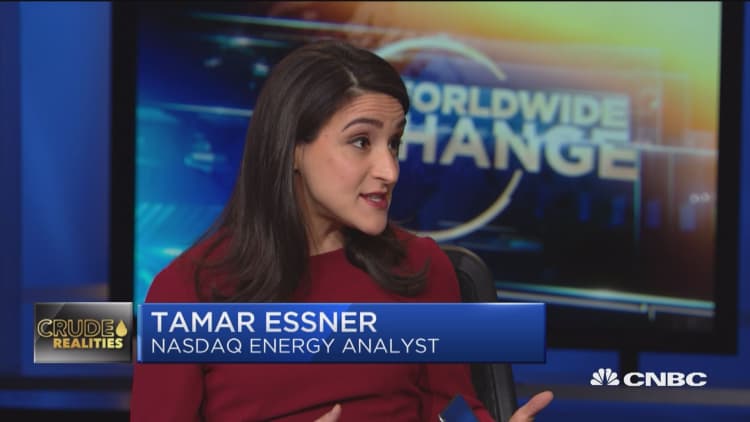
Oil futures rose on Thursday, steadying after this week's steep losses as fuel stockpile declines in the United States helped offset concerns about a potentially oversupplied market next year.
Prices have also been supported by OPEC signaling possible output cuts in 2019.
Brent crude oil futures rose 42 cents to $66.54 a barrel by 2:22 p.m. ET, while U.S. crude futures ended Thursday's session 21 cents higher at $56.46.
Prices pared gains after data from the U.S. Energy Information Administration showed crude inventories jumped 10.3 million barrels in last week, the biggest weekly build since February 2017. Analysts in a Reuters poll had expected an increase of 3.2 million barrels.

Gasoline stocks fell 1.4 million barrels, while distillate stockpiles drew down by 3.6 million barrels, the EIA data showed.
"Product draws are helping to offset some of the bearish brunt of a double-digit build - both gasoline and distillate show a jump in implied demand," said Matt Smith, director of commodity research at ClipperData.
OPEC, led by Saudi Arabia, is considering a cut of up to 1.4 million barrels per day (bpd) next year to avoid the kind of build in global inventories that prompted the oil price to crash between 2014 and 2016.
"Oil prices shrug the (EIA) data off so far," Commerzbank commodities analyst Carsten Fritsch said. "One explanation could be that a substantial production cut by OPEC becomes more likely."
Earlier in the day, two-high ranking Russian sources told Reuters that Russia wants to stay out of any oil-production cuts being touted by some of its partners in the OPEC-led supply pact.
"(A cut) helps, but based on my balances, I think we'll need to see 1.5 million bpd at least for the first half of the year. Words aren't going to work. The market is going to need to see action as well," said ING commodities strategist Warren Patterson.

The International Energy Agency and OPEC this week warned of a sizeable surplus at least in the first half of 2019, and possibly beyond, given the pace of growth in non-OPEC production and slower demand in heavy consumers such as China and India.
The oil price has lost about a quarter of its value in only six weeks, pressured by a slowing global economy and soaring crude output led by the United States.
"Asian refiners and consumers we speak with are mentioning initial concerns of slowing demand," said Mike Corley, president of Mercatus Energy Advisors.
U.S. bank Morgan Stanley said on Wednesday that China's economic "conditions deteriorated materially" in the third quarter of 2018, while analysts at Capital Economics said China's "near-term economic outlook still remains downbeat".
China is the world's biggest oil importer and the second-largest crude consumer.


